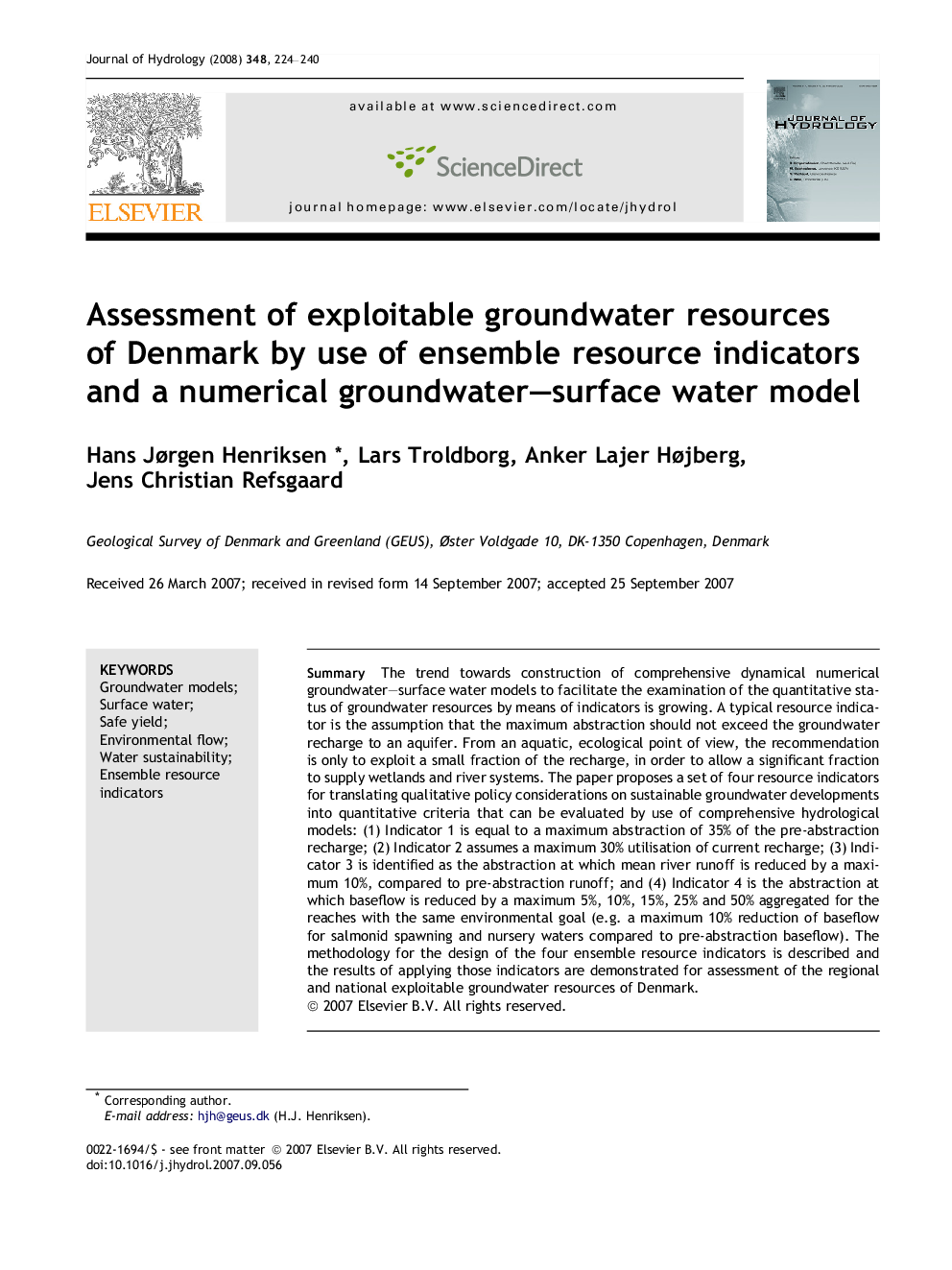| Article ID | Journal | Published Year | Pages | File Type |
|---|---|---|---|---|
| 4579608 | Journal of Hydrology | 2008 | 17 Pages |
SummaryThe trend towards construction of comprehensive dynamical numerical groundwater–surface water models to facilitate the examination of the quantitative status of groundwater resources by means of indicators is growing. A typical resource indicator is the assumption that the maximum abstraction should not exceed the groundwater recharge to an aquifer. From an aquatic, ecological point of view, the recommendation is only to exploit a small fraction of the recharge, in order to allow a significant fraction to supply wetlands and river systems. The paper proposes a set of four resource indicators for translating qualitative policy considerations on sustainable groundwater developments into quantitative criteria that can be evaluated by use of comprehensive hydrological models: (1) Indicator 1 is equal to a maximum abstraction of 35% of the pre-abstraction recharge; (2) Indicator 2 assumes a maximum 30% utilisation of current recharge; (3) Indicator 3 is identified as the abstraction at which mean river runoff is reduced by a maximum 10%, compared to pre-abstraction runoff; and (4) Indicator 4 is the abstraction at which baseflow is reduced by a maximum 5%, 10%, 15%, 25% and 50% aggregated for the reaches with the same environmental goal (e.g. a maximum 10% reduction of baseflow for salmonid spawning and nursery waters compared to pre-abstraction baseflow). The methodology for the design of the four ensemble resource indicators is described and the results of applying those indicators are demonstrated for assessment of the regional and national exploitable groundwater resources of Denmark.
